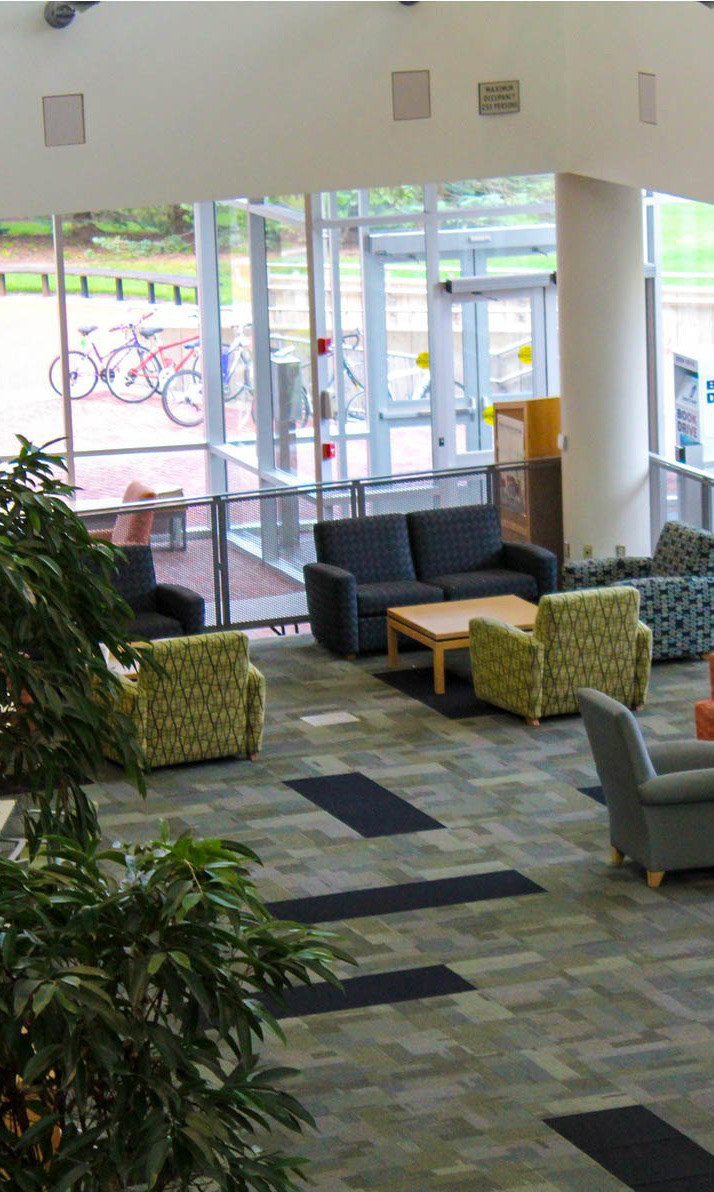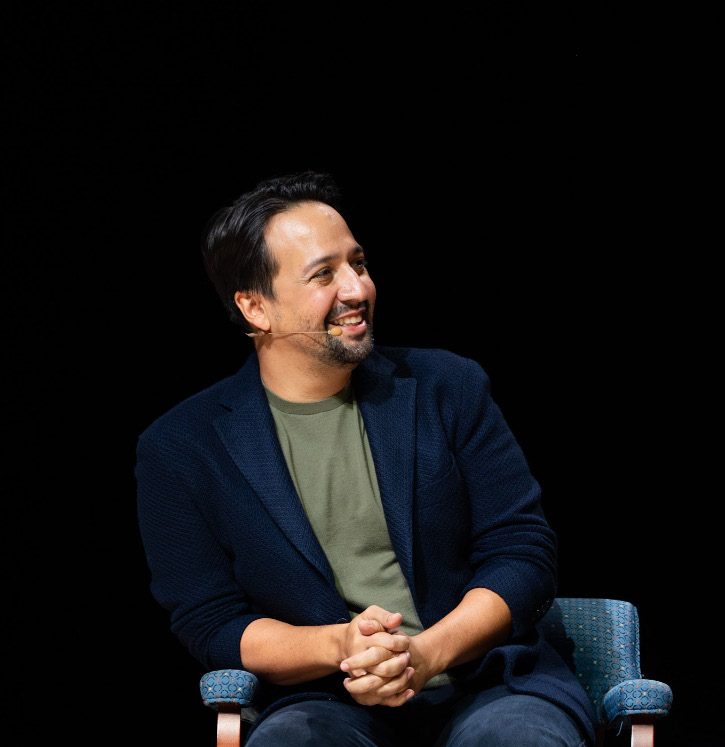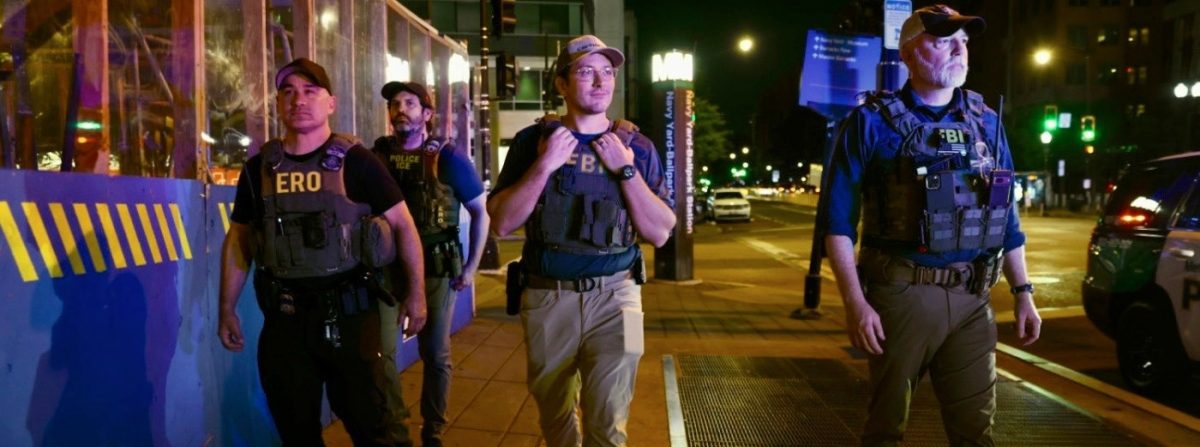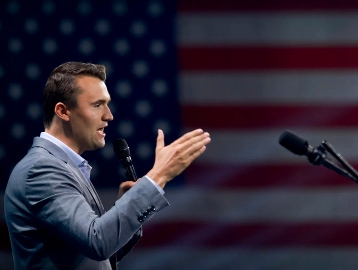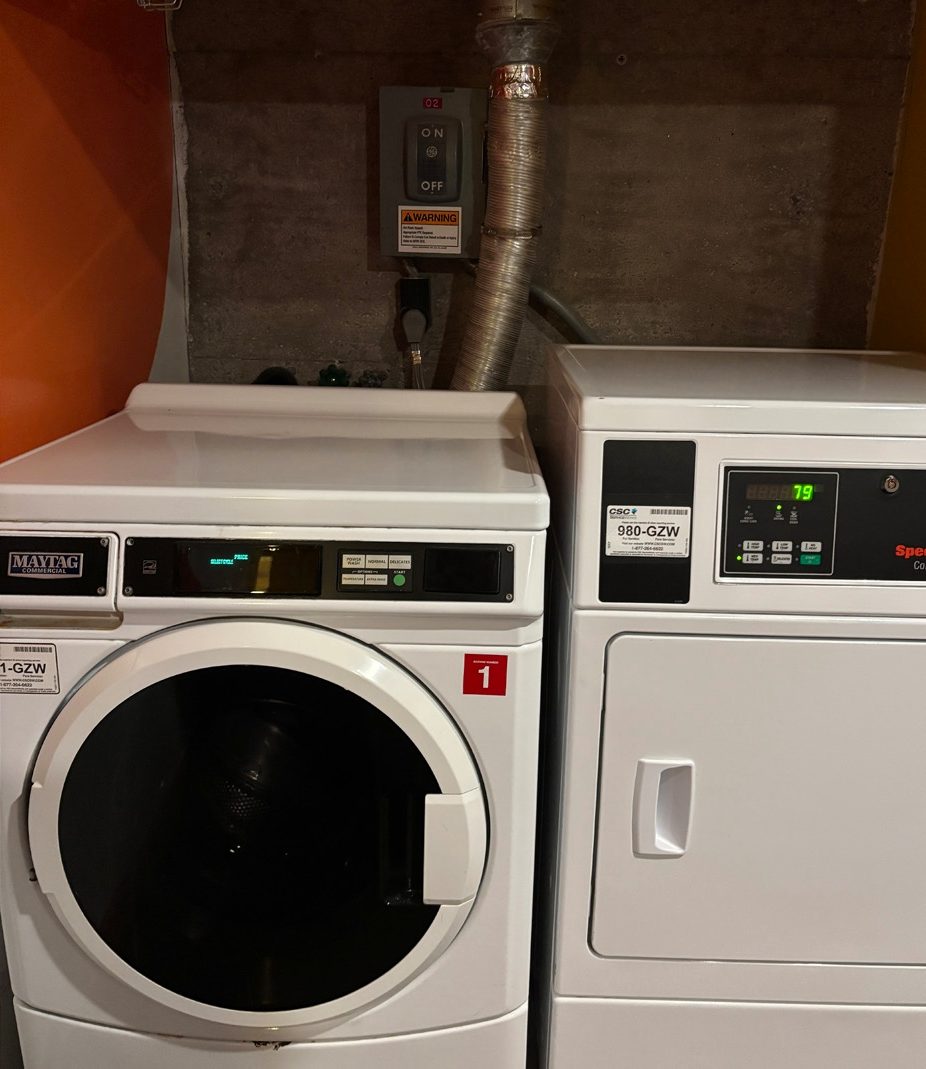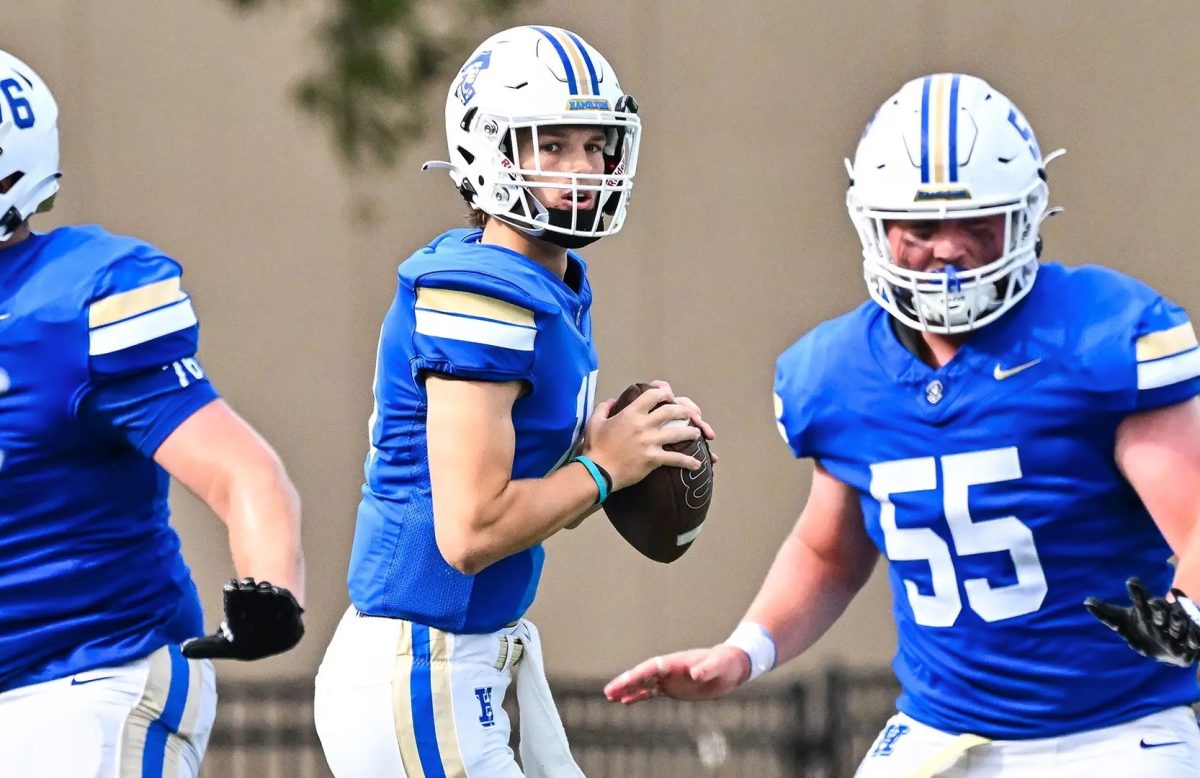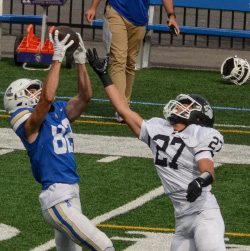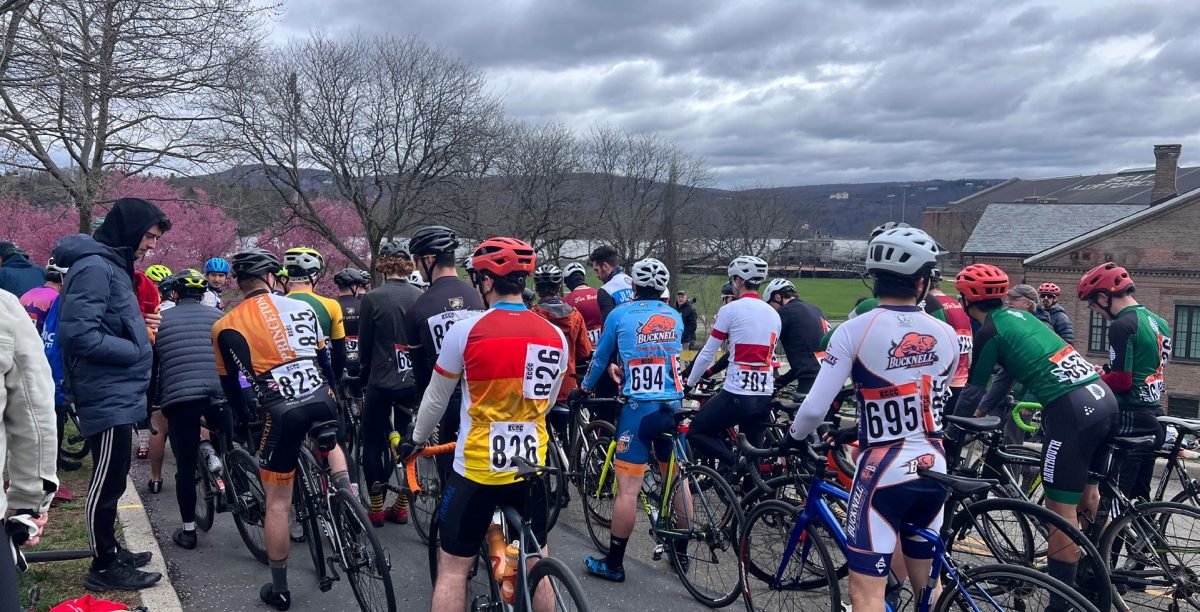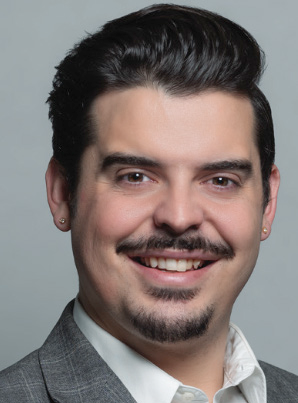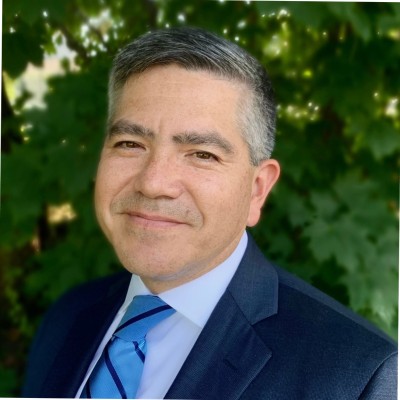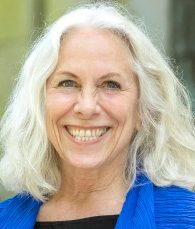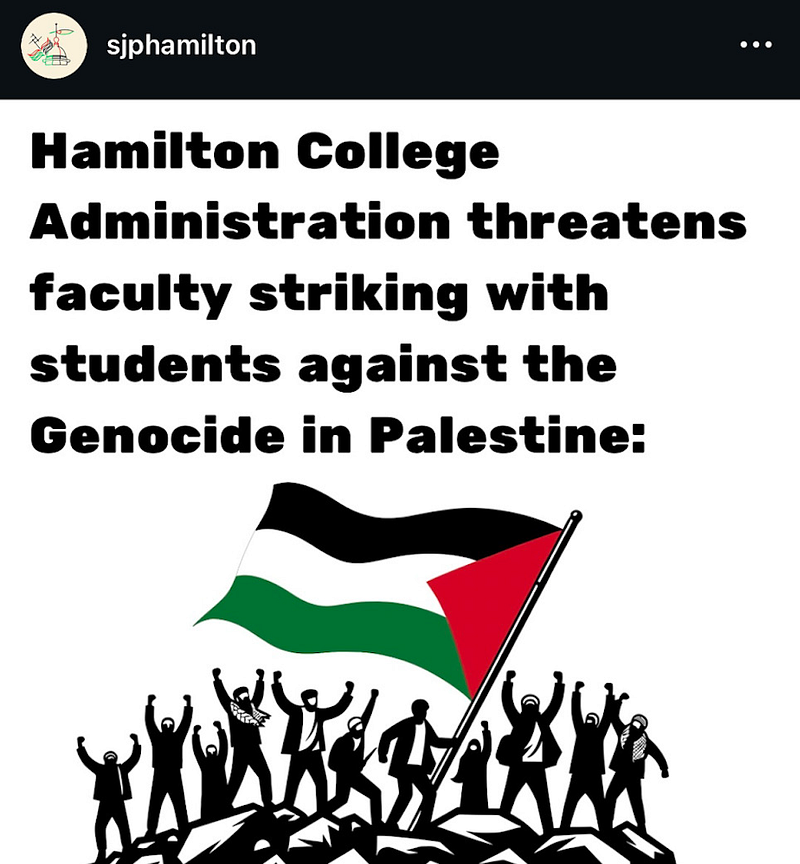
On Thursday, Nov. 28, students, staff and faculty gathered in the Kirner-Johnson (KJ) atrium as part of a Students for Justice in Palestine (SJP) strike imploring Hamilton to divest from institutions supporting U.S. military involvement in the conflict in Gaza. Prior to the event, the administration sent an email to the faculty warning that student academic freedom would be impeded by faculty participation in the strike. From 10 a.m. to 4 p.m., students and faculty led discussions on poems and essays from Palestinian writers, engaged with creative activities such as writing and poster decorating and chanted to “Free Palestine.”
In the weeks prior to the strike, flyers listing the event’s programming were distributed around campus, advertising the event as a Popular University event. According to National SJP’s Instagram, the National University for Gaza campaign is a movement dedicated to restricting the functions of schools while also providing a space for popular education, a model of education designed for community learning outside of classrooms. The strike at Hamilton was held alongside other strikes throughout the nation, led by chapters of SJP.
In a statement posted on
The Monitor
on Nov. 17, SJP asked students, “that you withhold your attendance from class to again demonstrate the power students collectively hold…If you cannot commit to this, we ask that you ask your professors to spend some time discussing Palestine in class.” It asked faculty, “that you cancel class, office hours, meetings and set up an automatic reply email explaining all of the above. If you do not feel comfortable committing to that, we ask that you dedicate some portion of class time talking about Palestine and ensure no academic penalties are dealt to students participating in the strike.” It asked staff, “if you are able to and would be willing, we ask that you strike with us. You are always more than welcome at our alternative programming for the day.”
Due to the public nature of the strike, it caught the attention of the Hamilton administration. In an email sent out to faculty before the strike, Vice President for Academic Affairs and Dean Ngonidzashe Munemo called for faculty not to participate in the strike. “We cannot and should not stop our engagement in the classroom under the pretext that we can somehow substitute for that loss by hosting events outside regular classes. Even one day without classroom instruction is a significant disruption to education for our students,” wrote Dean Munemo in his email.
He continued, “I regard canceling a class without having an explicit learning objective tied to the curricular arc of the course a failure to strike a balance between one’s professional obligations and one’s politics. It is my hope and expectation that we will see Thursday, Nov. 21 as another opportunity to engage with our students in our cherished classrooms, labs, studios, hallways, and offices. Minimally, faculty integrity demands that instruction disrupted and delayed is not instruction denied. As always, when faculty must cancel class, there needs to be a plan to make up for missed instructional time, without placing undue burdens on students…Choosing not to teach, respond to emails, or engage with students on the subject of the classes in which they’ve enrolled, as I see it, would be a stretch to any reasonable understanding of academic freedom.”
In a statement to
The Spectator
, Dean Munemo clarified that, “as Dean of Faculty, my position is that learning can take place inside and outside the classroom, but that faculty are responsible for shaping that learning through active pedagogy. The strike called for withholding labor — canceling classes, not holding office hours, and not responding to emails. If faculty choose to engage the materials of their class through alternative assignments, such as directing students toward other means of learning and engagement, that is certainly acceptable. Faculty are free to teach the content of their classes in any way they like, but withholding instruction, which was part of what the strike explicitly called for, is not, in my opinion, in the spirit of academic freedom. As my letter to faculty made clear, I am committed to academic freedom, but I am also committed to an inclusive academic environment and to the integrity of instructional time and the academic schedule.”
Despite the email to faculty, several faculty members showed up to the strike in support of SJP and Palestine. In response to the email, an anonymous professor said, “I think of education as much broader than the way professional responsibilities were articulated in that email, so what I’m doing here is teaching. It is a piece of all the work that I do in my classroom.” These professors led many of the educational programs throughout the strike.
In the morning before the strike, SJP sent out a campus-wide statement responding to the administration’s email. They claimed in the email that, “confining the scope of education to the classroom as a response to the strike, whose purpose is not only to demand the College to disclose and divest, but also to educate and invite dialogue, is a political stance against faculty and students alike.” Countering the administration’s position, SJP continued, “the administration’s email goes against the spirit of open dialogue and conversation that is an integral part of Hamilton College as an institution.” Their email ended with the question “why is faculty support for the strike on November 21st not considered to be academic freedom?”
The strike began with a series of speeches made by members of SJP about their reasons for hosting the strike. These speeches made connections between Hamilton College and the military industrial complex. Derya Arikan ’26 said, “from our little bubble alone, we send our students educated at our institution to work with military internships, which is the shining promise of resume building and career opportunities, the very same military industrial complex that bombs children to pieces in Palestine. Your tuition money goes through layers and layers of bureaucracy, only to be funneled into companies like BlackRock, that your peers also work at, to guarantee maximum return for the college, as if an institution so committed to the stance of apolitical education has any business funding bombs.”
The Spectator
cannot confirm the specifics of the College’s investments. At this point, Hamilton College Administration and Board of Trustees have not made public plans to divest.
After the initial student speeches were made, the strike’s educational programming began. Several faculty members led attendees through texts about the Palestinian experience. The first of these texts, an essay titled “From the River to the Sea to Every Mountain Top: Solidarity as Worldmaking” by Robin D. G. Kelly, grapples with the modern Black-Palestinian transnational solidarity versus the historic alliance between Civil Rights and Zionist movements. In the essay, Kelly demonstrates the ideological shift that caused the alliances of the Civil Rights Movement to change from Israel to Palestine.
After the essay, several poems were read and discussed in the KJ atrium, including selected works from Zeina Azzam’s Some Things Never Leave You, June Jordan’s “Apologies to All the People in Lebanon and Samih Al-Qasim’s “A Letter from Prison.” The poems discuss the authors’ experiences with Palestinian culture, the language of war, imprisonment and trying to empathize with Palestine from the U.S. The poems expressed the pain, hope and joy of the people of Palestine.
Attendees volunteered to read various passages from texts chosen by the leading faculty member. Afterwards, they were able to converse on their interpretations of the text. Students were generally slow to participate in these discussions during this part of the day, with conversations dominated by a handful of students. As the day went on, more people started to engage in the discussions of these texts and future topics.
Lafa Mediterranean by Zeina’s Catering was served for lunch, and afterwards several more members of the faculty made speeches in favor of the people of Palestine. These speeches related the struggles faced by the Palestinian people to the topics these professors taught in class, connecting academic subjects with political positions.
Small group activities filled the remainder of the day’s scheduling. The first of these activities was a workshop on art and poetry led by members of SJP. Attendees were asked to imagine liberation and radical action, then gave the ideas life through their art and poetry. These ideas of liberation and radical action were carried into small group discussions about radical optimism and the relationship between attendees and Palestine. The strike concluded at 4 p.m. with a group chant to “Free Palestine.”
This controversy of the strike marks another point of contention between some members of the Hamilton community and the administration regarding political action. Over the summer, new clarifications to the Hamilton protest policy were written. These clarifications included the requirement that protests be registered to 25Live, later made into merely a suggestion, restrictions to what can be performed, displayed or produced during the protest without prior permission and restrictions to where a protest can be held.
The SJP Popular University strike was another student-led event aiming to pressure Hamilton College and the Board of Trustees into divesting from the military industrial complex. It offered students an opportunity to engage with Palestinian literature outside the bounds of classrooms due to the efforts of student members of SJP and striking professors. As shown through the administration’s email, there remain lingering questions brought up by the strike about academic freedom and the responsibilities of faculty wishing to engage with political issues.
